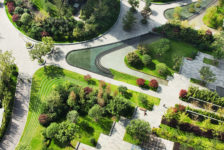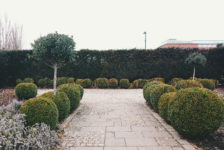Article by Maria Giovanna Drago We have selected five of the most interesting drainage solutions to show you how their impact could be implemented in the landscape. Are you planning on designing a park or renovating your home garden? While you may already have knowledge of vegetation, outdoor furniture, paving, and lighting—a troubling issue that many are faced with is an excess of water. If it rains too much a garden or park could quickly become a swamp. Once the soil becomes saturated insects start to proliferate in the water, some of which are bearers of diseases. Additionally, overflow water can make moving through a space difficult as well as damage buildings or other structures. Avoid a Bad Design Do not rely on mediocre designed systems. A poor design decreases property value up to 15 percent, without mentioning the aesthetics and usability. It’s always wise to consult an expert and shy away from do-it-yourself methods.
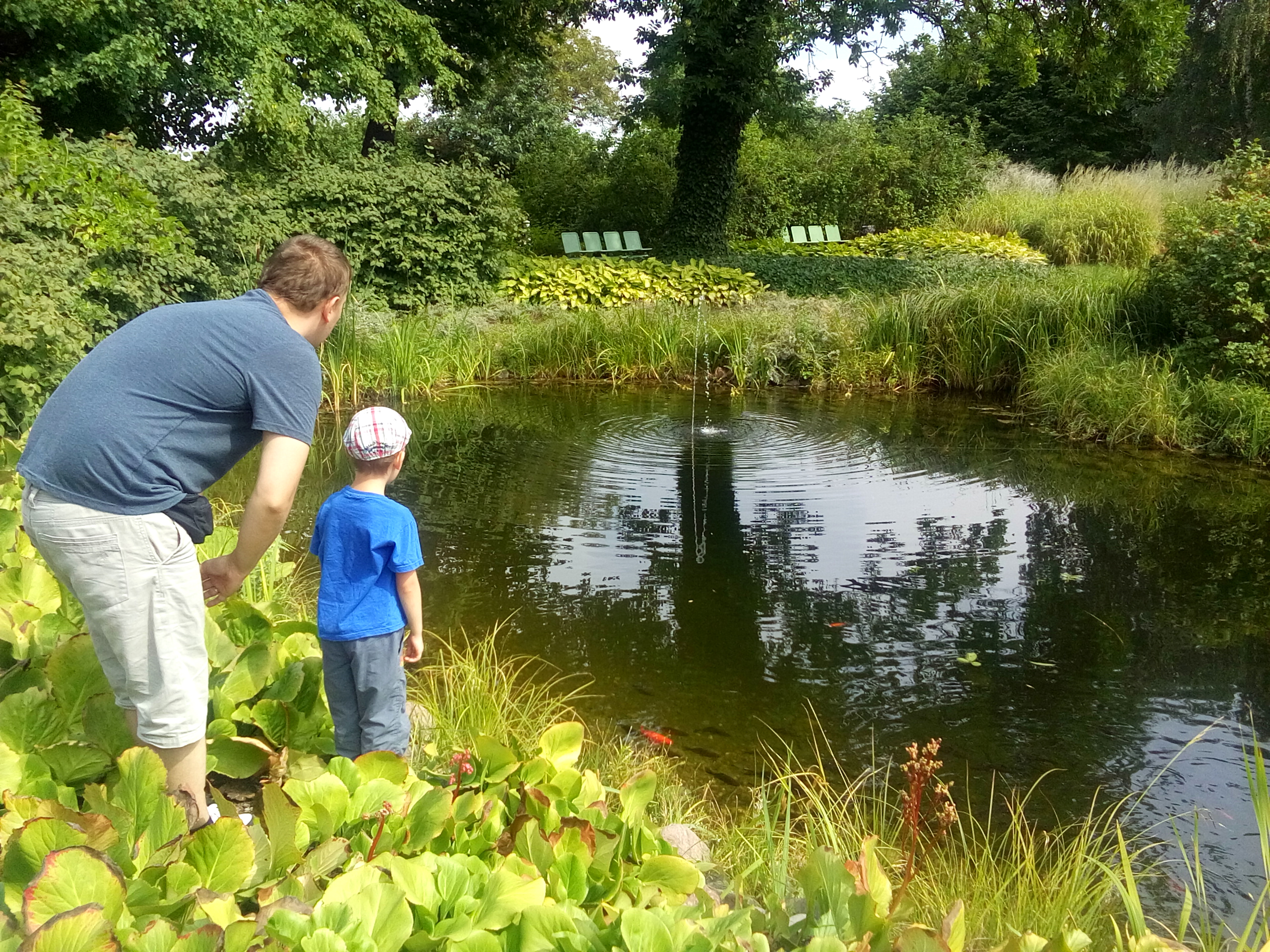
Warsaw University Library Garden located in Poland. Credit: Maria Giovanna Drago
In fact, it’s necessary to simulate the annual rainfall and snowfall of the referenced territory, considering the risk of storms, in coordination with an analysis of the soil absorption capacity. For example, soil that is predominantly made of clay does not allow water to drain as it should, so it can be mixed with sand or compost. It’s also important to consider the layers of a filtering substrate. Ultimately, you could determine the flow to be drained, the sizing and route of the drainage system, and the correct position of the tanks and inspection wells.
Look for Alternatives You need the right guide to make sure a site is not only visually appealing, but also environmentally friendly and attentive to the waste of water and energy. As an additional suggestion, water can be collected in a tank and reused for irrigation purposes or for washing furnishings. This way what was first seen as a problem becomes a valuable resource. There are different types of drainage systems and we’re convinced that being a landscape architect does not mean installing pipes, but finding the proper solution that leads to a successful result.
1. Phytoremediation Herbal purification is an example that incorporates efficiency and practicality with a system of streams and small lakes. In this case, water is revealed and not hidden, since it’s used as a characteristic feature in the landscape. It’s conveyed from the various areas in an ornamental drainage stream for recreation or irrigation. The water flows slowly between plants, which act as a biological filter and together with the combined action of the gravel material, they purify it by simulating a natural process. For example, floating plants are ideal to assimilate heavy metals. Once cleansed, it can be reused to water cultivated areas or for toilet discharge.

Warsaw University Library. Credit: Maria Giovanna Drago
The use of grid pavement or spaced dry laying is an interesting technique suitable for both pedestrian and vehicular paved areas. This method follows the natural cycle of rainwater based on diffusion. As a result, the manholes spaced out on waterproof surfaces disappear or diminish. A good landscape architect knows how to integrate greenery with flooring modules in a harmonious way so as not to reveal the drainage purpose, but focus on an attractive aesthetic.
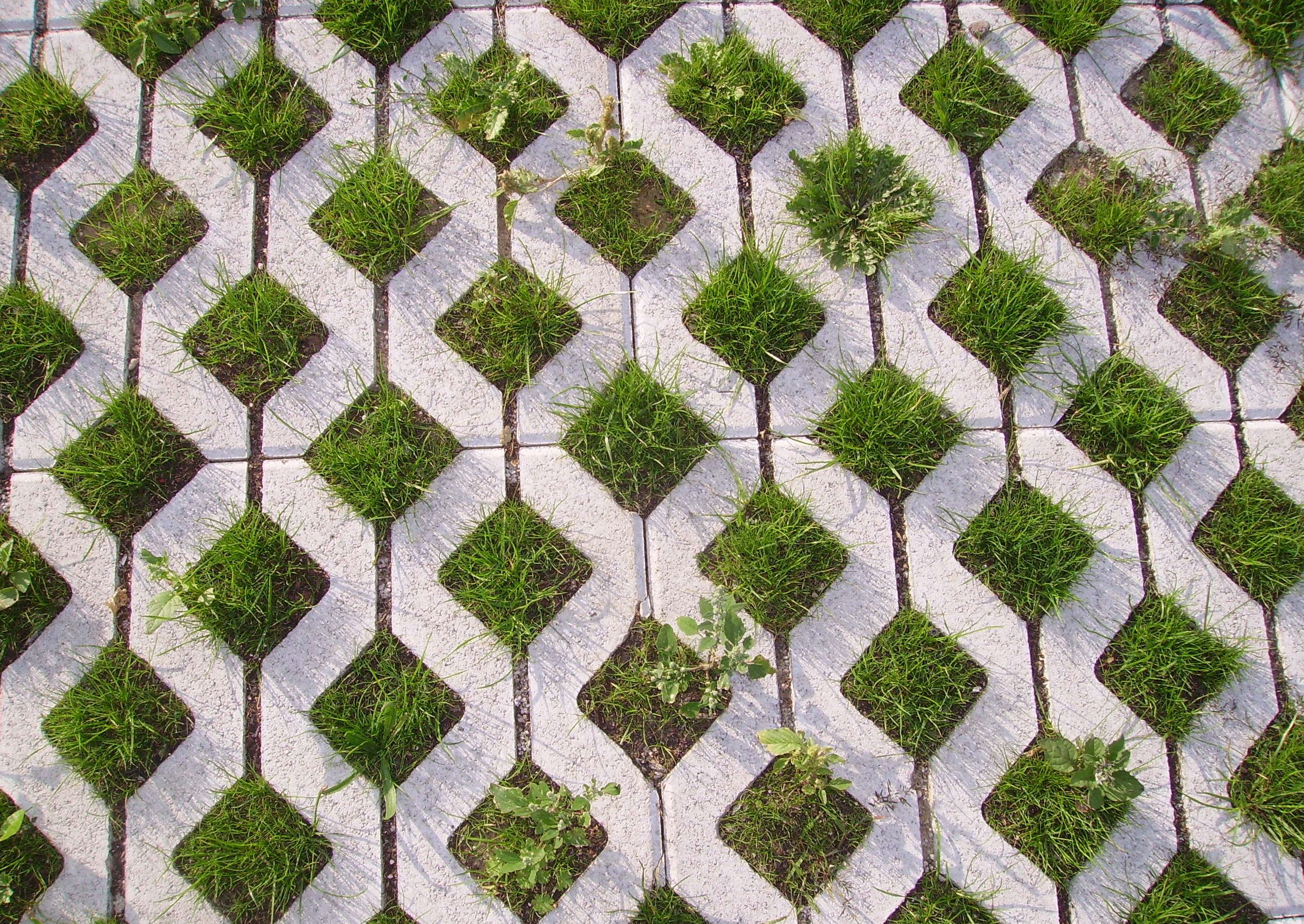
Grass pavement. Credit: Immanuel Giel via CC BY 2.0
You can opt for pervious concrete, which is commonly used in continuous surfaces such as parking areas. This also facilitates the widespread absorption of water and it’s characterized by a mixture of Portland cement, coarse aggregates, water, and additives. The very low or total absence of fine parts comprises its porous structure, which allows an easy flow of water and air. Unlike non-draining floors that absorb daytime heat, this drainage system contributes to a more favorable natural microclimate.

Pentagon Memorial in Arlington, Virginia by Kaseman Beckman Advanced Strategies and Buro Happold. Credit: Brien Aho via CC BY 2.0
If you prefer tradition or you really need to use the common grid, don’t forget there are grids available with geometric or floral patterns, usually made of cast iron, stainless steel, or polypropylene. Or you can specify a minimal style with a narrow linear grid for a more pleasing appearance. This approach is ideal if you want to give continuity to the surface, allowing a minimal visual impact. The channels will collect water and it will be directed to siphoned wells and collection tanks.
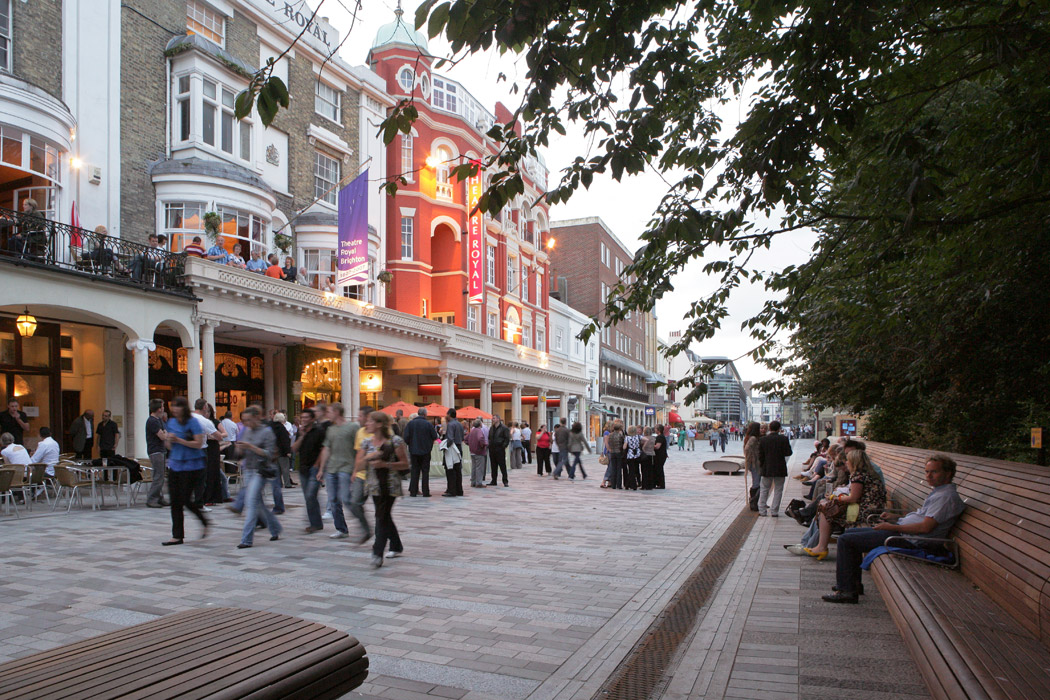
New Road located in the city of Brighton & Hove, UK designed by Landscape Projects and Gehl Architects. Credit: Gehl Architects
Have you ever heard of French drainage? This system first appeared in France in the 1800s. It’s made of a long-limbed path filled with gravel and a perforated underground pipe to redirect water. Interestingly, it functions like a traditional well, but looks more rural and natural. In fact, it can be placed seamlessly along avenues or defining flowerbeds. This is a perfect choice for safeguarding particularly sensitive areas.
Do you know of more drainage systems? Share your knowledge to the community and leave a comment in the box below. Recommended Reading:
Featured image: Quzhou Luming Park | Quzhou, Zhejiang, China | Turenscape | 2016
Published in Blog









